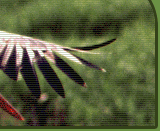| Project passport | | Project title | ParkInventory and evaluation of spring mire habitats in Latvia | | Project duration | December 1, 2003 November 30, 2004. | | Participants | Latvian Fund for nature | | Funding | Wetlands International | | Project Area | All of Latvia | | Co-ordinator | Māra Pakalne | | Contact | | Telephone | 7034875 | | Fax | 7034874 | | E-mail | mara@latnet.lv | | Address | Rīga, Kronvalda Bulvāris 4 | | LV-1010, Latvija | With the financial support of the Wetlands International in December 2003 a project devoted to spring mires in Latvia was started and will last until November 2004. Project activities: · Evaluation of present status of spring and spring mire habitats in Latvia;
· Field trips to study the species composition and ecological characteristics of these habitats;
· Preparation of a map showing the distribution of the most valuable spring and spring mires areas in Latvia;
· Preparation of recommendations for habitat management and conservation;
· Ppublishing of an informative booklet on springs and spring mires in Latvia (in Latvian and English). From all the mire types spring mire habitats are least studied in Latvia. It is also the most vulnerable habitat as it can be easy damaged by various human activities, like forest cutting and trampling caused by tourists. According to the regulations of the Cabinet of Ministers of Latvia, springs and spring mires are included in the list of protected habitats of Latvia that are as follows: · lime-rich (calcareous) spring fens;
· poor-in lime spring fens;
· sulphur springs;
· calcareous fens with Carex davalliana;
· calcareous fens with Schoenus ferrugineus. These protected springs and spring mires of Latvia are also included in the list of protected habitats of the EC Habitat Directive (Council Directive 92/43 of May 21 1992): · Fennoscandian mineral-rich springs and spring fens (code 7160);
· Calcareous fens with Cladium mariscus and species of the Caricion davallianae (code 7210*);
· Petrifying springs with tufa formation (code 7220*);
· Alkaline fens (code 7230). Spring mires are found in various regions of Latvia but due to the geological peculiarities, the territory of the Gauja National Park is one of the richest in Latvia. Sulphur springs occur mainly from the Ķemeri National Park. Inventory and evaluation will include the study of all the spring mire types. | 







